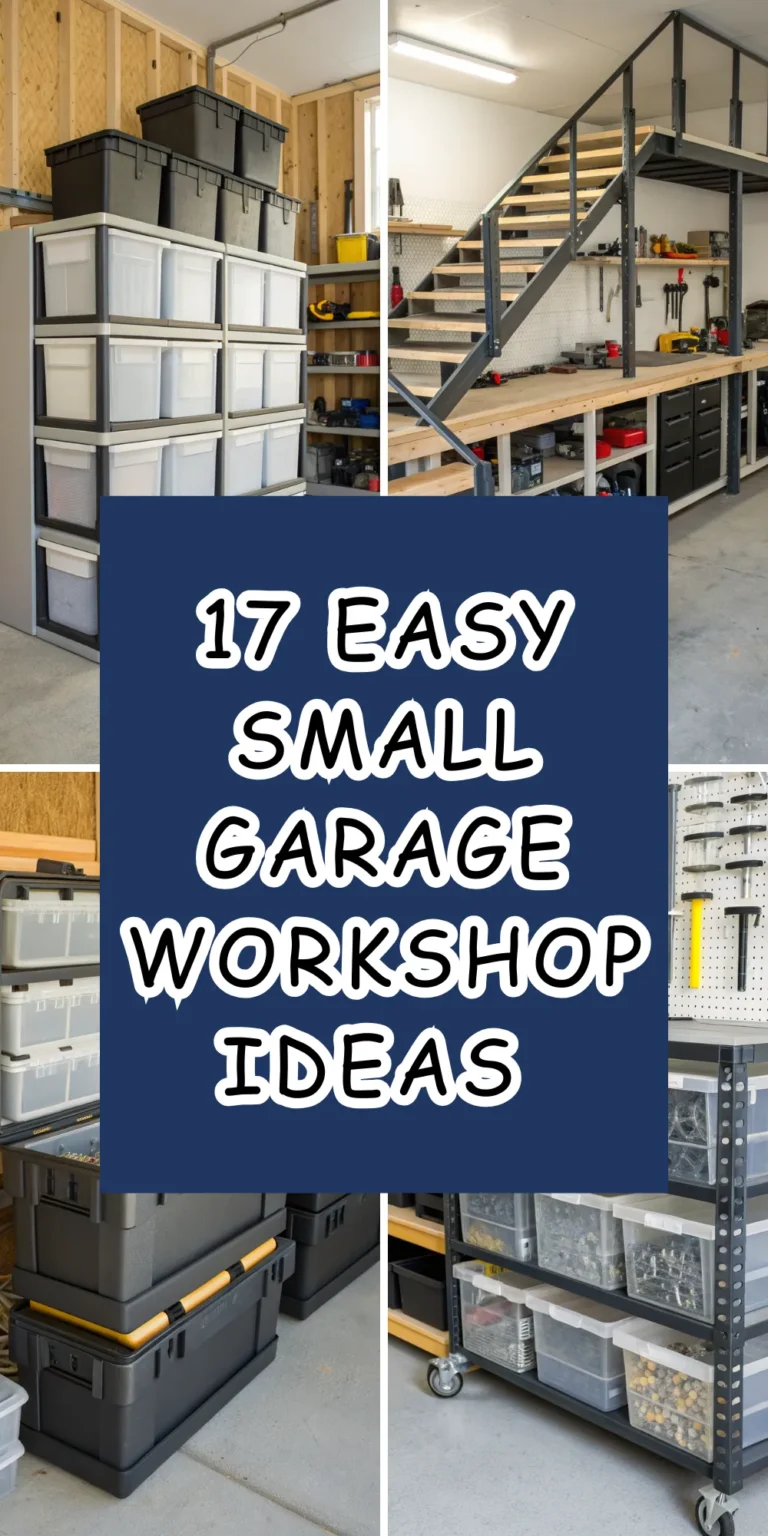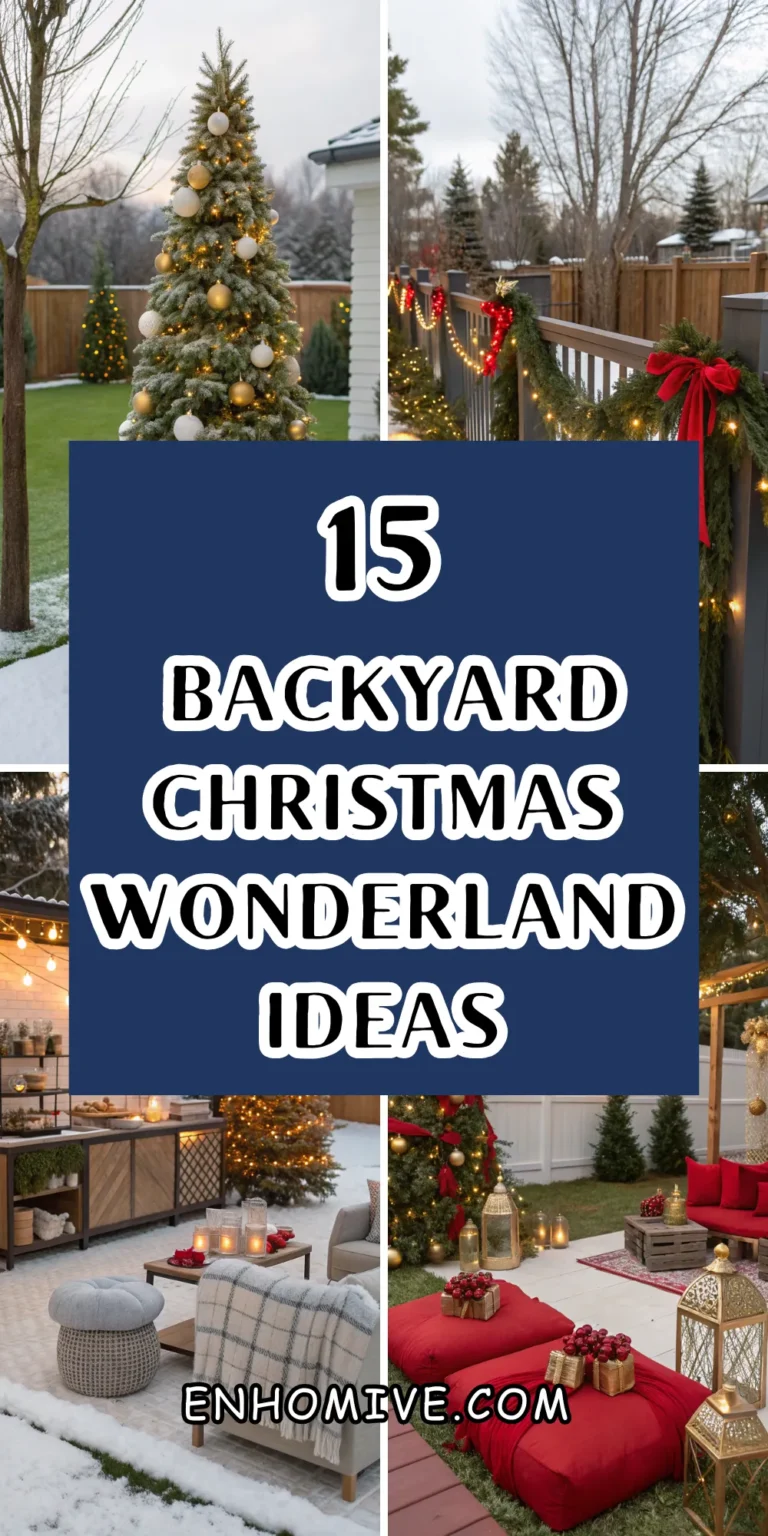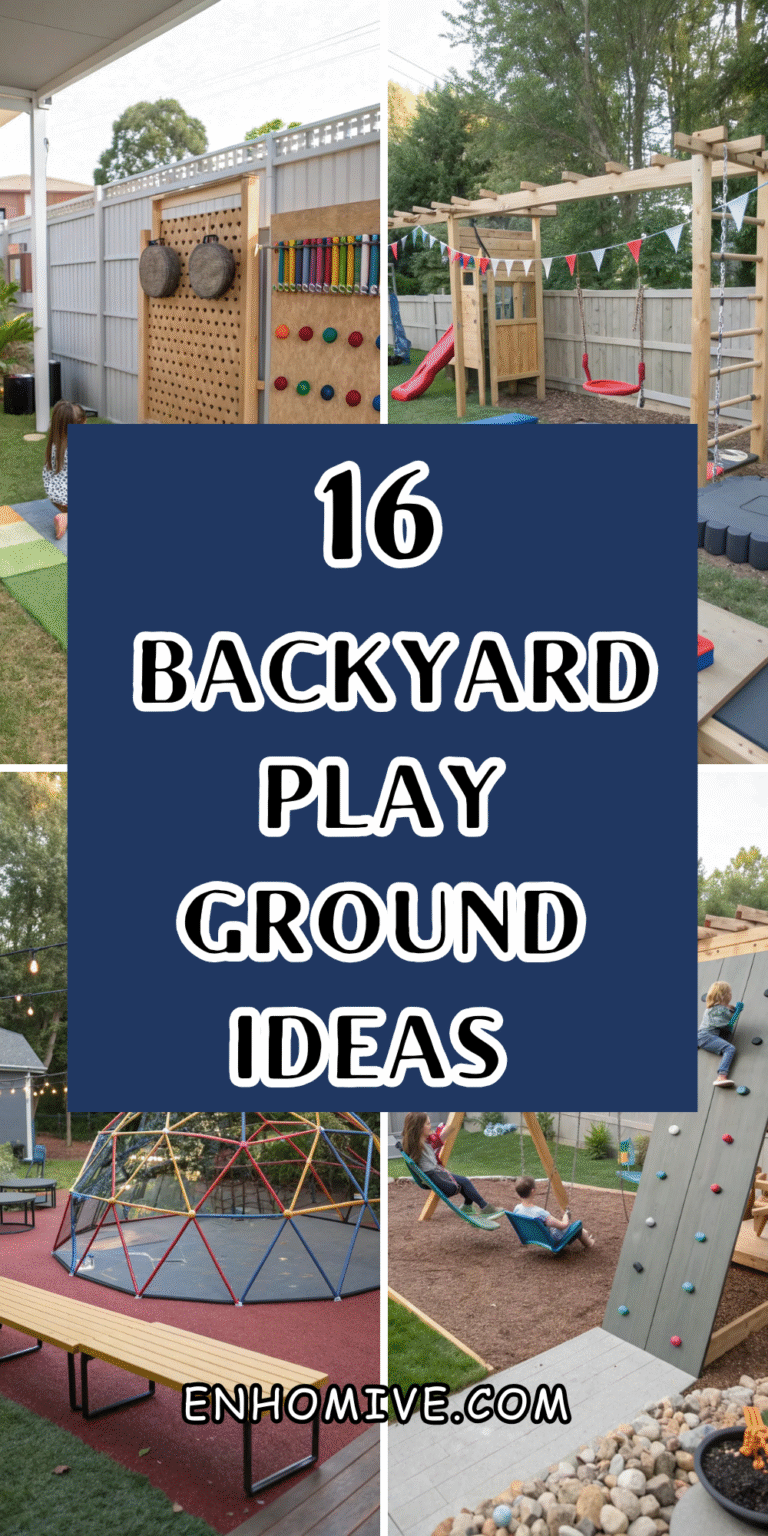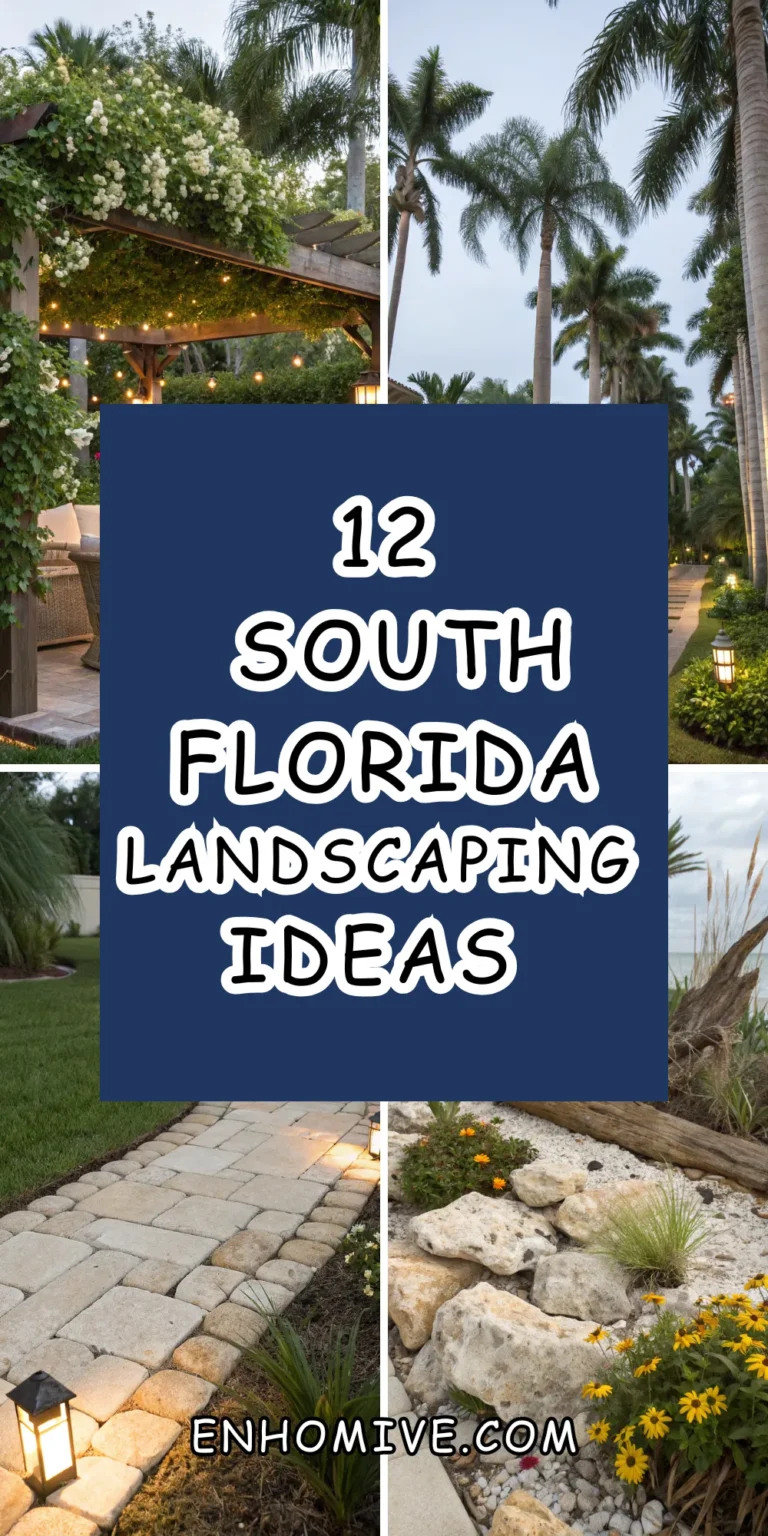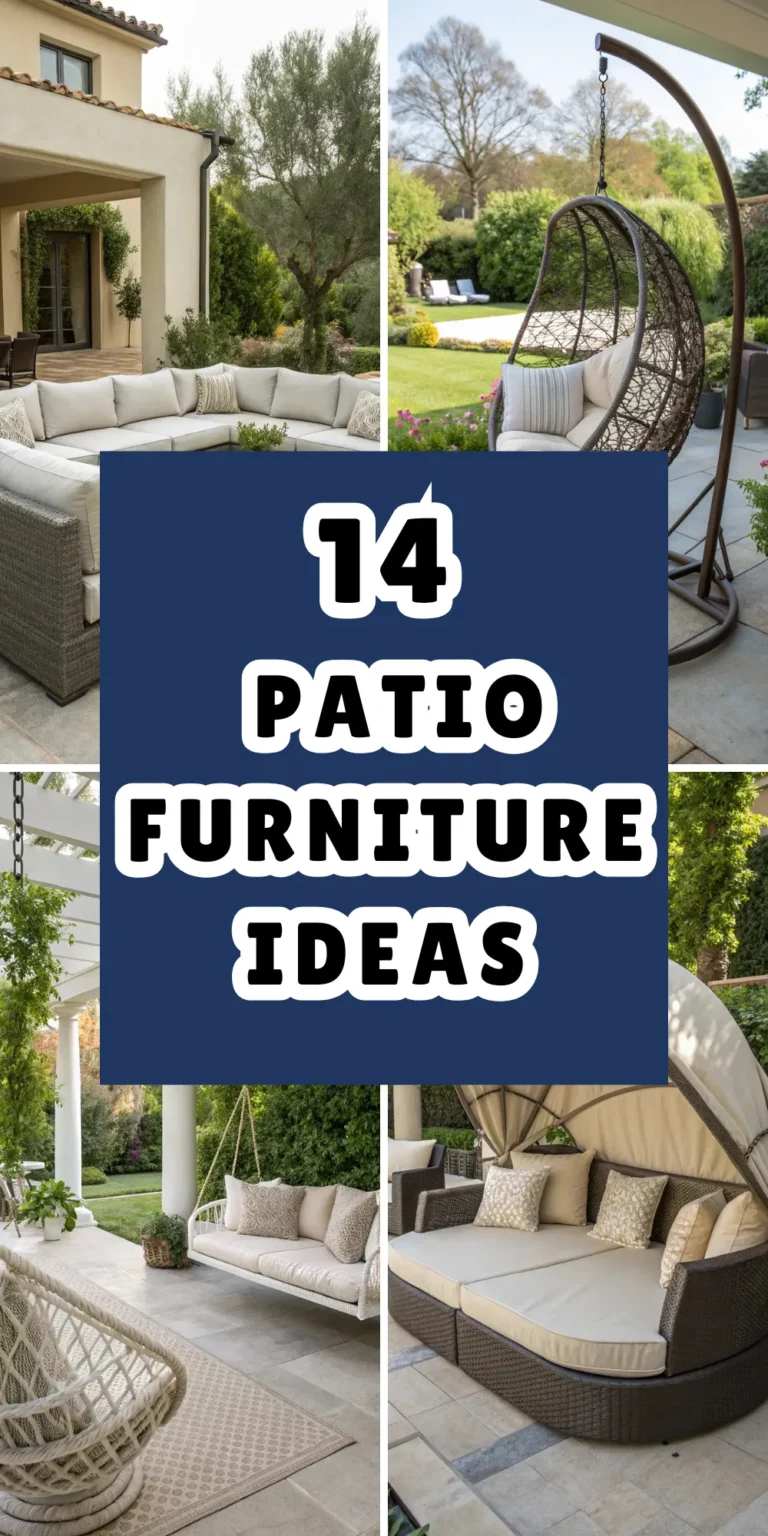16 UNIQUE FOREST GARDEN IDEAS FOR YOUR BACKYARD
Ready to turn your ordinary backyard into something absolutely magical? Forest gardening isn’t just about throwing some trees together and calling it done – it’s about creating a sophisticated ecosystem that feels like stepping into an enchanted woodland, but with all the modern design sensibilities that make outdoor spaces truly stunning.
Whether you’re working with a tiny urban lot or sprawling suburban space, these forest garden concepts will have you creating Instagram-worthy outdoor retreats that actually get better and more beautiful with time.
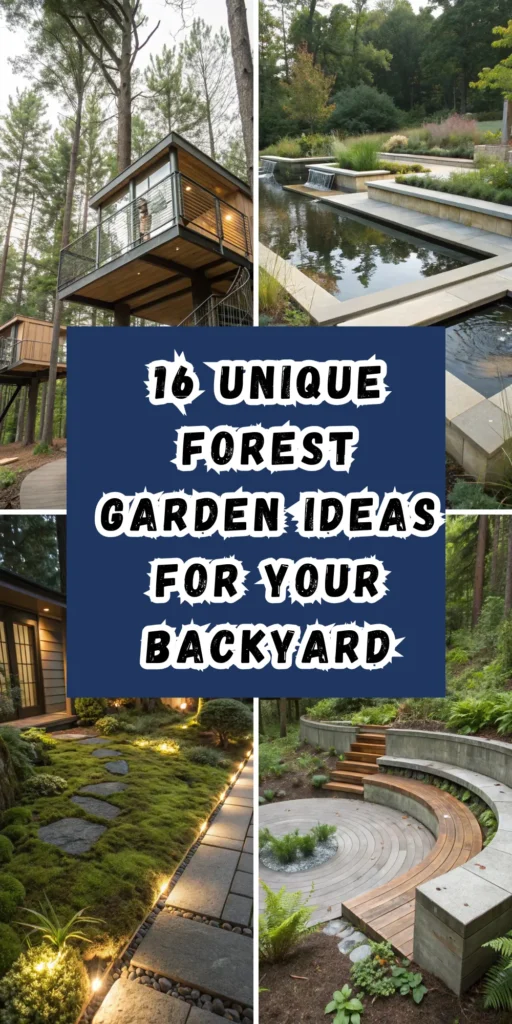
Layered Canopy Design with Sculptural Elements
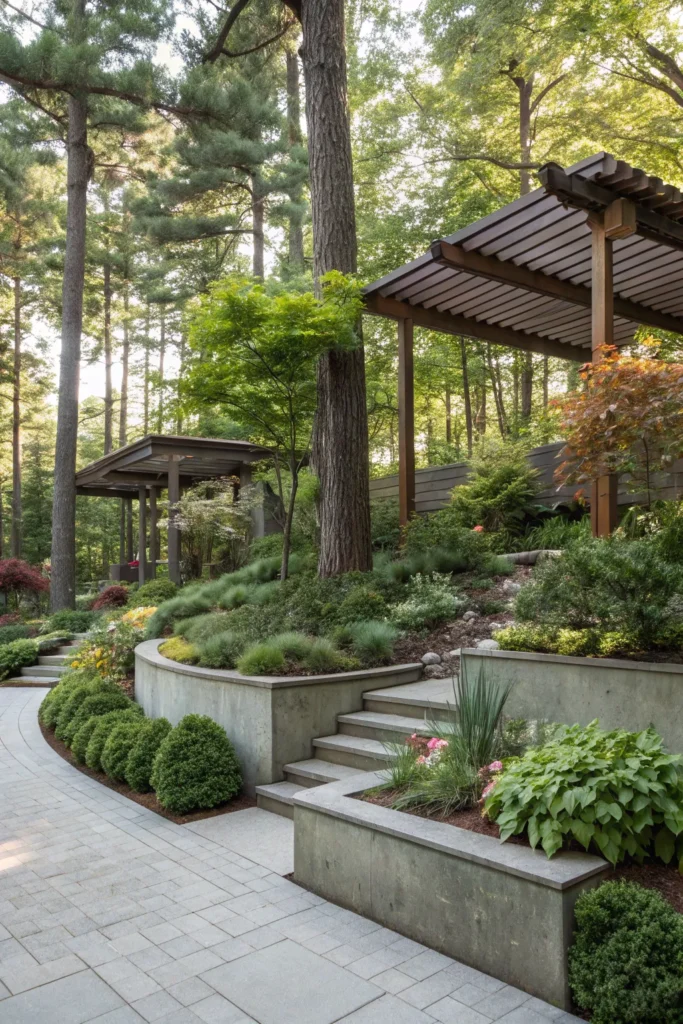
Create dramatic vertical interest by designing distinct canopy layers – tall shade trees, understory flowering trees, shrub layers, and ground covers – then punctuated with modern sculptural elements like weathered steel planters or geometric concrete features.
The magic happens when you choose trees and shrubs that bloom at different times, ensuring year-round visual interest. Consider Japanese maples for understory drama, native dogwoods for spring flowers, and evergreen shrubs for winter structure. The sculptural elements should feel organic yet contemporary – think flowing curves rather than harsh angles that compete with nature’s forms.
Modern Moss Gardens with Integrated Lighting
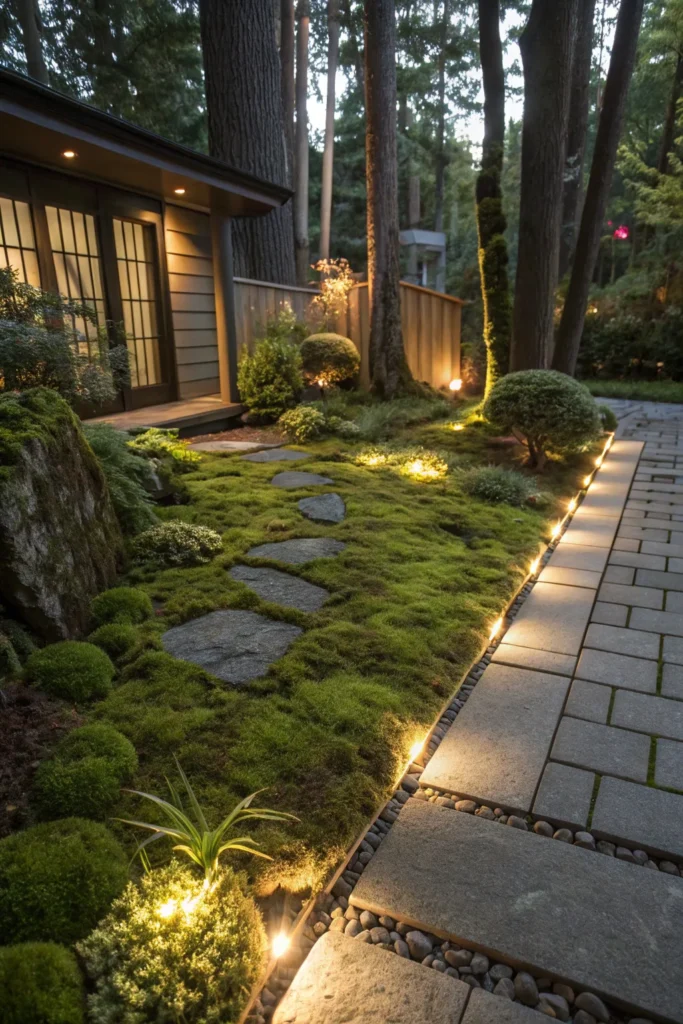
Transform shaded areas into luxurious moss carpets punctuated by sleek, low-voltage LED strip lighting that follows natural pathways through the space. This creates an almost ethereal nighttime experience while highlighting the moss’s incredible textures during the day.
Moss gardens require consistent moisture and shade, making them perfect for areas under tree canopies where grass struggles. Choose native moss species for best results, and create gentle misting systems using hidden sprinkler heads. The lighting should be warm-toned and positioned to graze across the moss surface, creating depth and highlighting the garden’s natural contours.
Sunken Forest Groves with Contemporary Seating
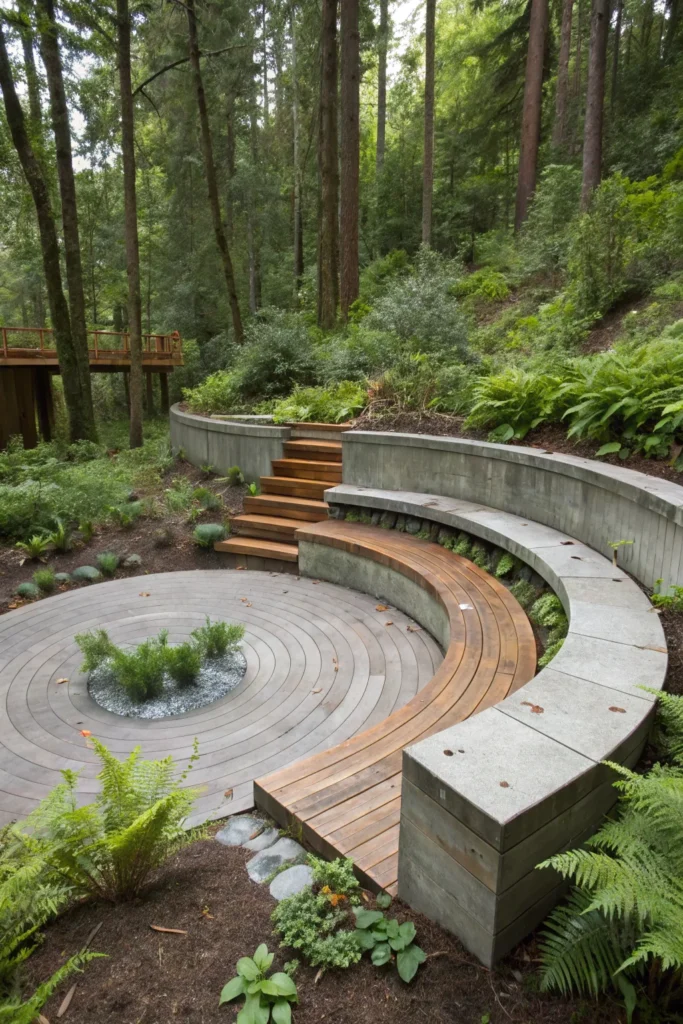
Excavate circular or organic-shaped areas 2-3 feet below grade to create intimate forest groves, then add built-in contemporary seating using materials like weathered concrete or naturally-finished hardwood that complement the woodland setting.
The sunken design creates natural wind protection and a sense of enclosure that makes these spaces feel incredibly cozy and private. Plant the surrounding elevated areas with native ferns, hostas, and woodland wildflowers that will naturally cascade over the edges. This technique works especially well in flat yards where you want to create topographical interest without building up.
Glass House Forest Integration
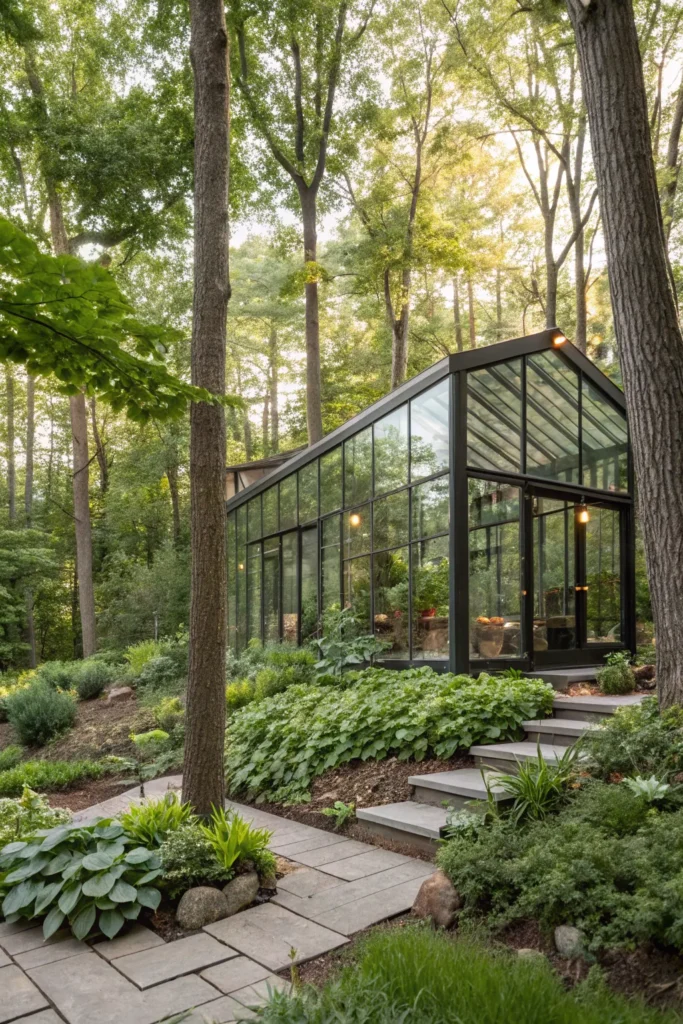
Install a modern glass greenhouse or conservatory that appears to float within your forest garden, creating a stunning contrast between sleek contemporary architecture and wild woodland plantings that seem to grow right up to the glass walls.
The key is positioning the structure so forest plantings can grow close enough to create the illusion of integration without actually touching the glass. Use the greenhouse for starting seedlings, growing exotic plants that complement your forest theme, or as a sophisticated outdoor dining space surrounded by nature. The transparent walls maintain visual connection with the garden while providing climate control.
Contemporary Water Features with Natural Stone
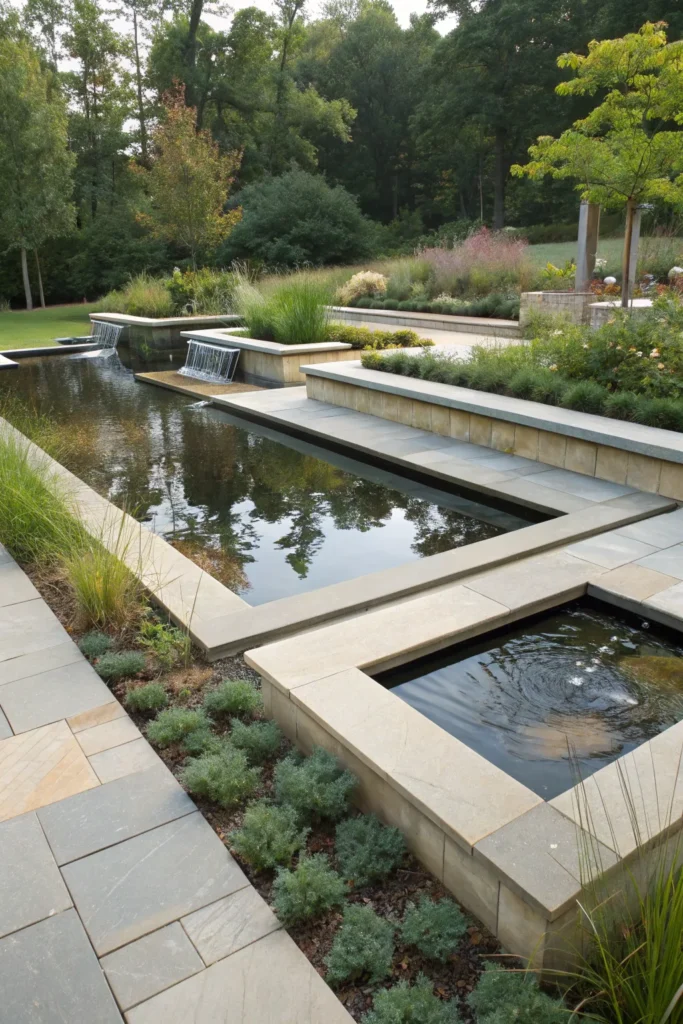
Design modern water features using locally-sourced stone arranged in clean, geometric patterns, but allow native aquatic plants and mosses to soften the edges naturally over time. Think sleek rectangular pools or linear water channels rather than traditional pond shapes.
The contrast between crisp architectural lines and soft natural growth creates incredible visual tension that keeps these features interesting. Use recirculating pumps for gentle water movement, and choose native water plants that will attract beneficial insects and birds. Position features to reflect surrounding trees, doubling the visual impact of your canopy layers.
Vertical Forest Walls with Modern Support Systems
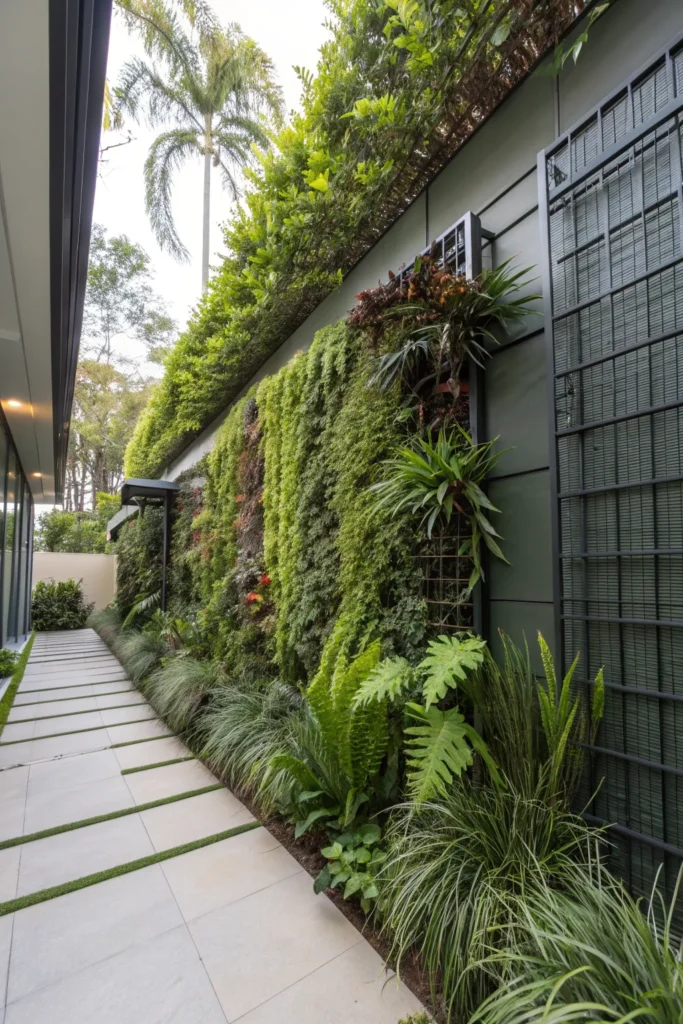
Create living walls using contemporary steel or aluminum grid systems, then plant with native climbing vines, ferns, and air plants to develop lush vertical forests that can screen unsightly areas or create privacy barriers.
Modern support systems allow for clean lines and systematic planting while the vegetation softens everything naturally. Consider automated irrigation systems built into the framework for easy maintenance. These vertical elements work especially well in smaller spaces where you want maximum green impact without sacrificing square footage.
Geometric Pathway Systems Through Wild Plantings
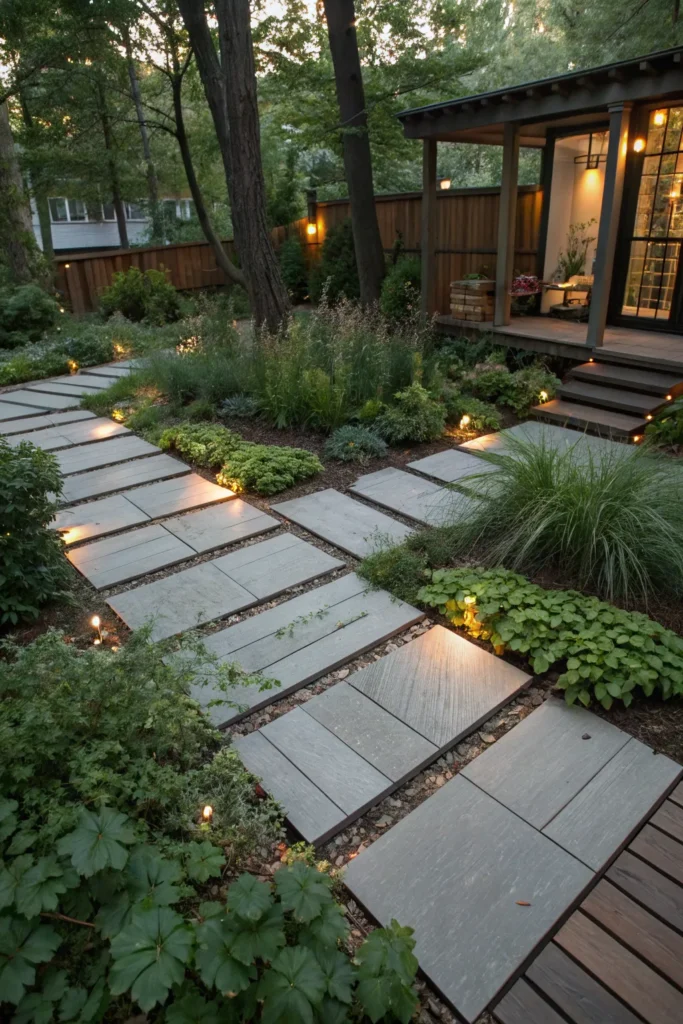
Install pathways using contemporary materials like large-format concrete pavers, weathered steel strips, or modern composite decking, but route them organically through wild forest plantings to create a sophisticated journey through your woodland space.
The pathways should feel intentional and designed while the plantings appear completely natural and wild. This contrast creates visual interest and makes even small gardens feel much larger by creating a sense of exploration and discovery. Use pathway lighting that’s integrated into the paving material for seamless nighttime navigation.
Modern Treehouse Platforms with Minimalist Design
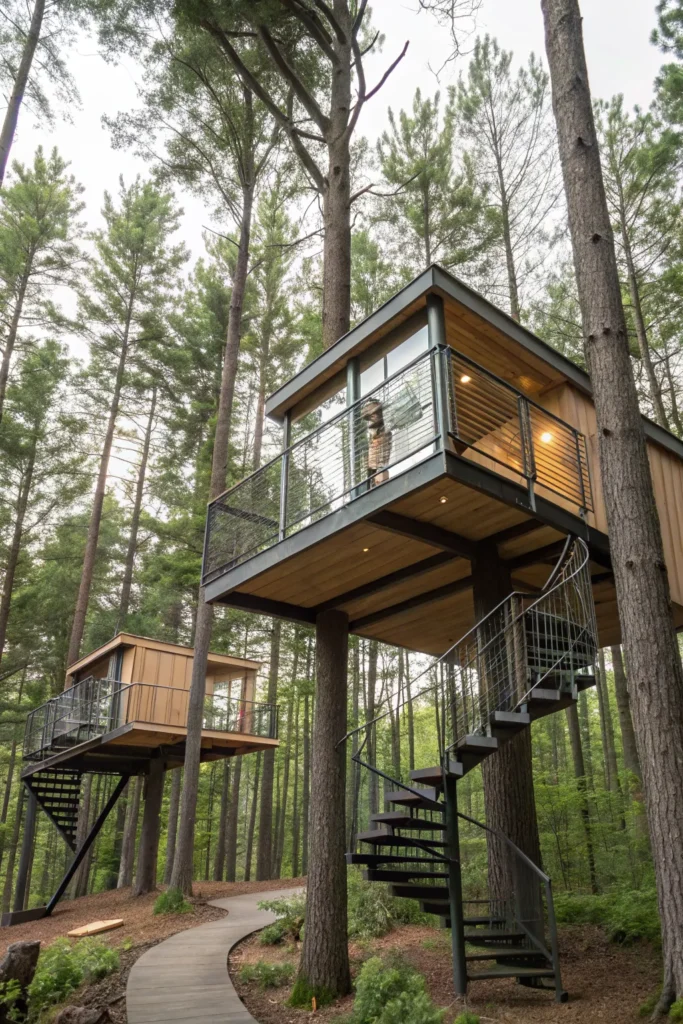
Build contemporary platform structures in mature trees using clean-lined steel or aluminum framing with natural wood decking, creating elevated retreats that feel like modern architecture floating in the forest canopy.
These platforms don’t need to be fully enclosed structures – sometimes a simple elevated deck with built-in seating creates the perfect forest observation point. Use cable railings or glass panels to maintain visual connection with surrounding trees. Access via sleek steel staircases or contemporary spiral stairs that become sculptural elements themselves.
Contemporary Fire Features Surrounded by Forest
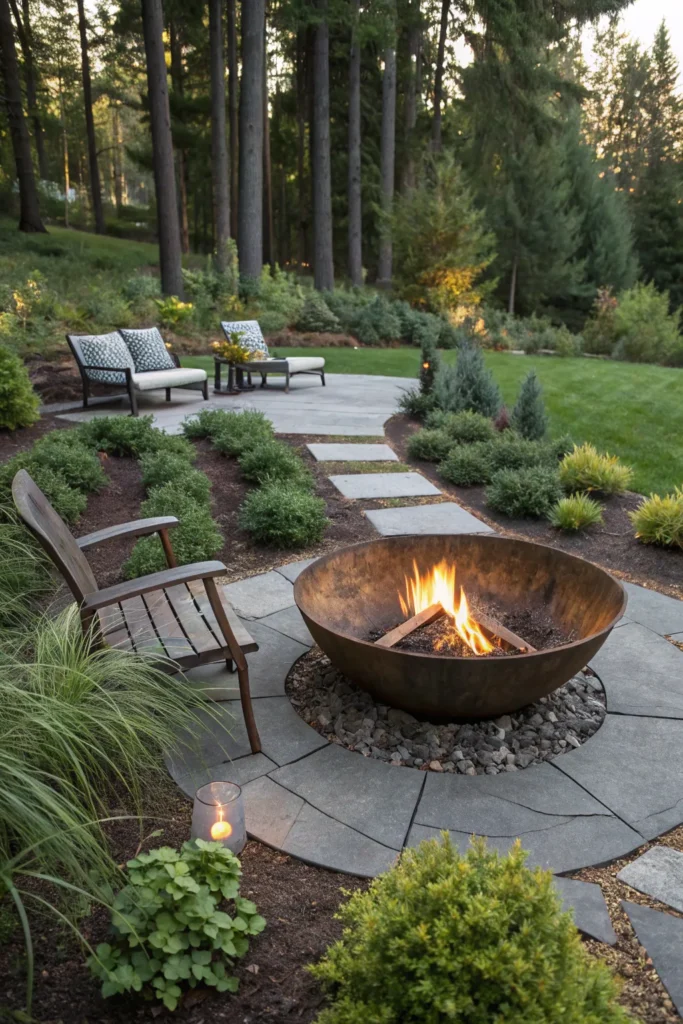
Design modern fire pits or linear fire tables using materials like weathered steel, concrete, or natural stone, then surround with carefully planned forest plantings that create intimate gathering spaces while maintaining appropriate safety clearances.
The fire feature becomes the focal point while forest plantings provide natural wind breaks and create cozy, enclosed feeling spaces. Choose fire-resistant plants for areas closest to flames, and consider automated gas systems for easy operation. Position seating to take advantage of both fire warmth and forest views.
Edible Forest Gardens with Contemporary Organization
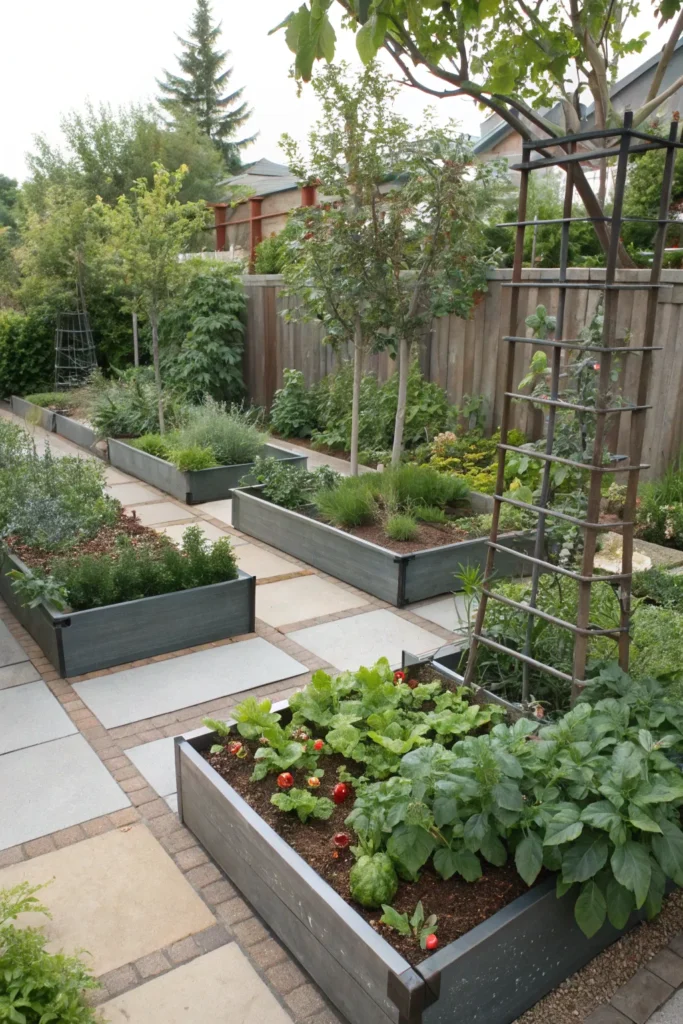
Create productive forest gardens using modern organizational principles – geometric planting beds, contemporary trellising systems, and sleek tool storage – while growing food in forest-like layers including fruit trees, berry bushes, herbs, and ground covers.
The key is making food production look intentionally designed rather than chaotic. Use matching containers for herbs, install matching trellis systems for climbing edibles, and create clear pathways between productive areas. This approach makes edible gardening feel sophisticated and integrated with overall landscape design rather than like a separate vegetable patch.
Modern Greenhouse Integration with Forest Plantings
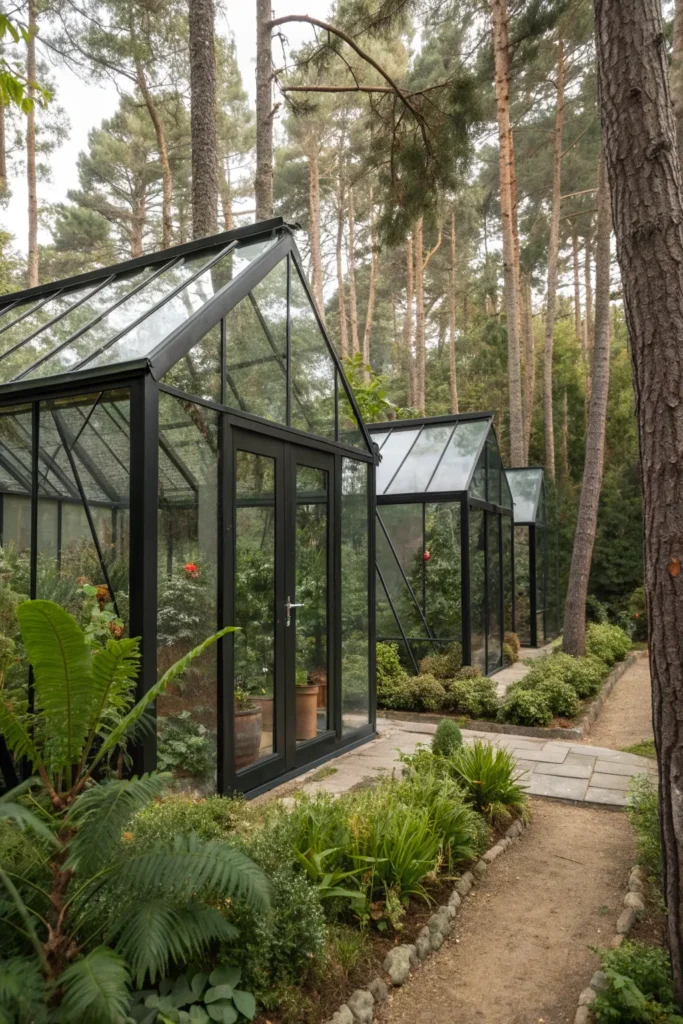
Design contemporary greenhouse structures that appear to emerge from forest plantings, using materials like black metal framing and clear panels that reflect surrounding vegetation while housing exotic plants or extending growing seasons.
Position greenhouses where they can be partially screened by existing trees but still receive adequate light. The structure should feel like it belongs in the forest setting while clearly being a modern architectural element. Use the greenhouse to grow plants that complement your outdoor forest theme – tropical ferns, orchids, or unusual specimens that add interest to your overall plant palette.
Artistic Stone Arrangements in Natural Settings
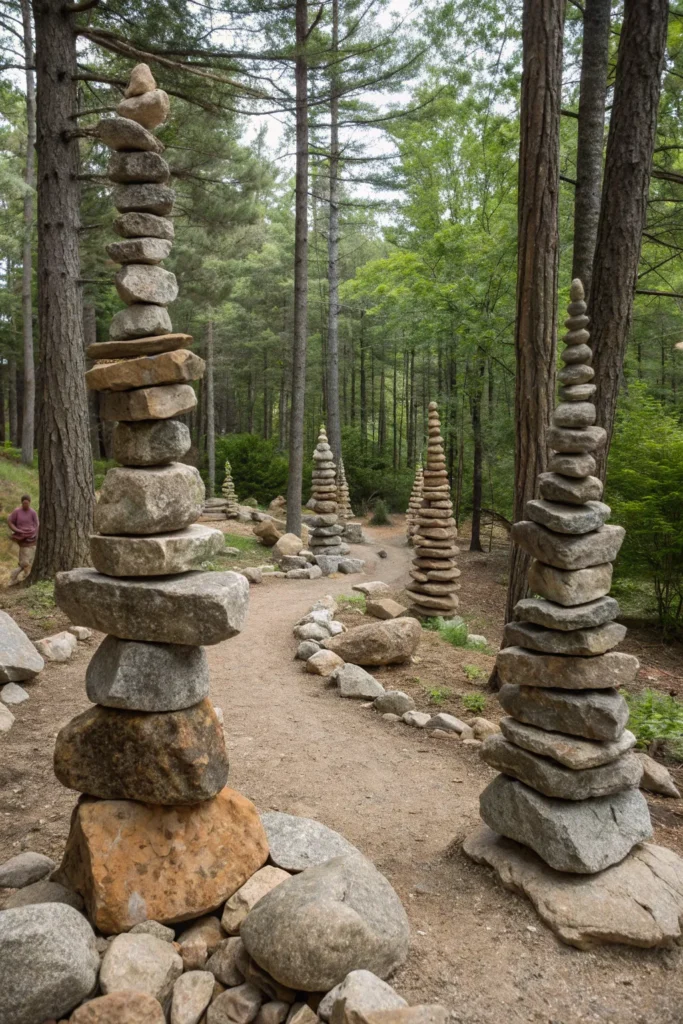
Create contemporary stone sculptures or artistic arrangements using locally-sourced materials, positioned within forest settings to feel like natural geological formations that have been refined by modern artistic sensibility.
These installations should feel like they could have occurred naturally while clearly showing human artistic intervention. Stack stones in gravity-defying arrangements, create spirals or geometric patterns, or arrange boulders to frame specific views through your forest space. The key is achieving a balance between natural and artistic that makes people stop and really look.
Modern Lighting Design for Woodland Spaces
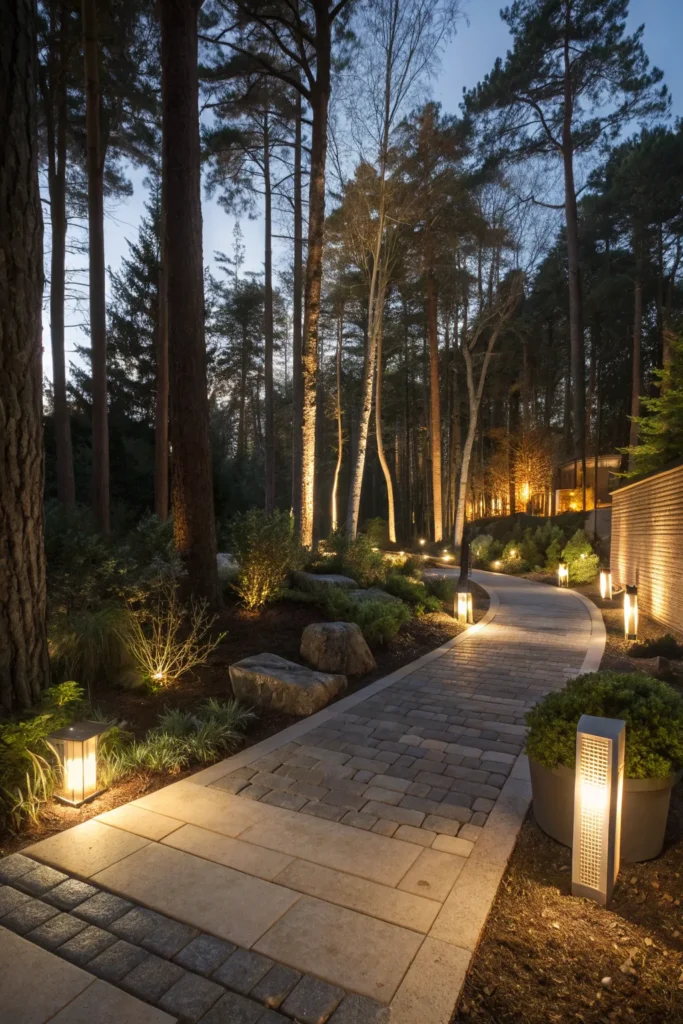
Install contemporary lighting systems that highlight your forest garden’s best features – uplighting for dramatic tree silhouettes, pathway lighting integrated into modern paving, and accent lighting for sculptural elements or water features.
The lighting design should feel invisible during daylight but transform your space completely after dark. Use warm-toned LED systems with dimming controls so you can adjust the mood for different occasions. Focus on highlighting texture, creating depth, and maintaining some areas of mysterious shadow that make exploration feel rewarding.
Contemporary Pergola Structures with Living Roofs
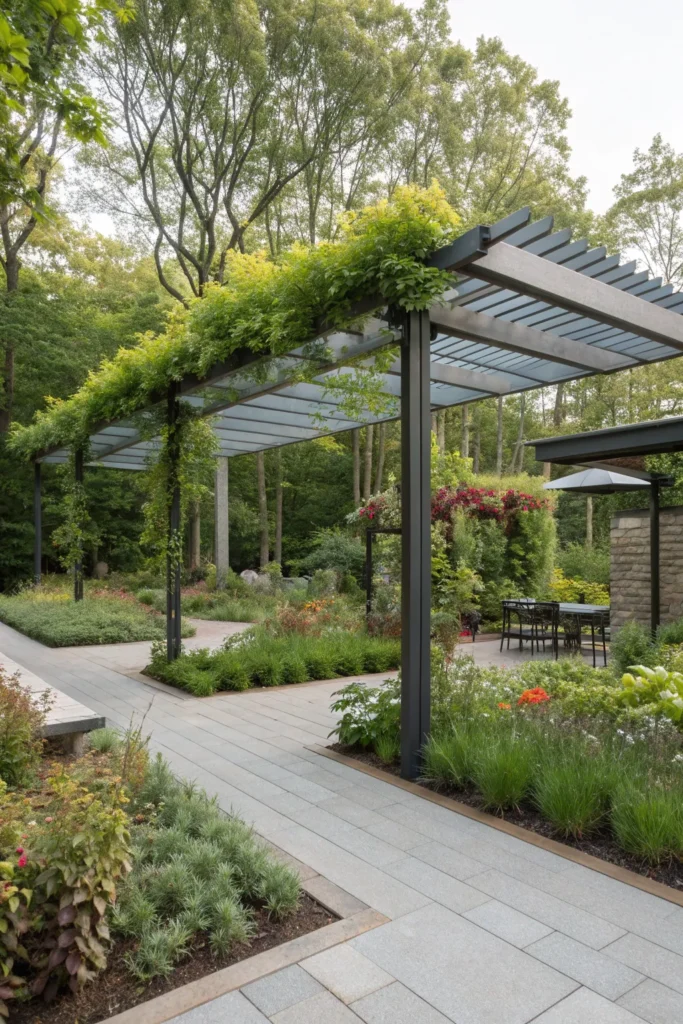
Build modern pergola or arbor structures using materials like steel or aluminum, then plant the tops with appropriate climbing plants or even lightweight soil systems for living roofs that blur the line between architecture and nature.
These structures provide a framework for vertical growing while creating defined spaces within larger forest gardens. Choose climbing plants that will create seasonal interest – flowering vines for spring and summer color, or evergreen climbers for year-round structure. The contemporary framework keeps everything feeling designed rather than overgrown.
Glass and Steel Garden Rooms in Forest Settings
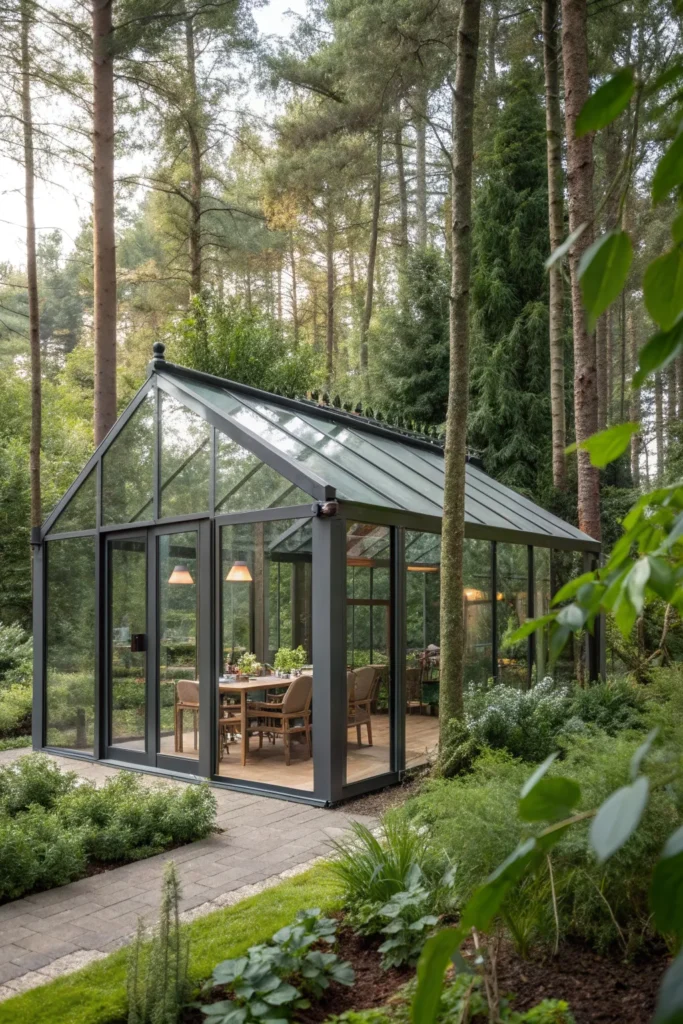
Create transparent garden rooms using modern materials like steel framing and glass panels, positioned within forest settings to provide weather protection while maintaining complete visual connection with surrounding woodland plantings.
These spaces work beautifully as outdoor dining areas, meditation spaces, or simply covered seating areas that let you enjoy your forest garden in all weather. The transparent construction means they don’t block views or interrupt the natural flow of the space, while providing practical functionality for year-round use.
Multi-Level Deck Systems Through Forest Areas
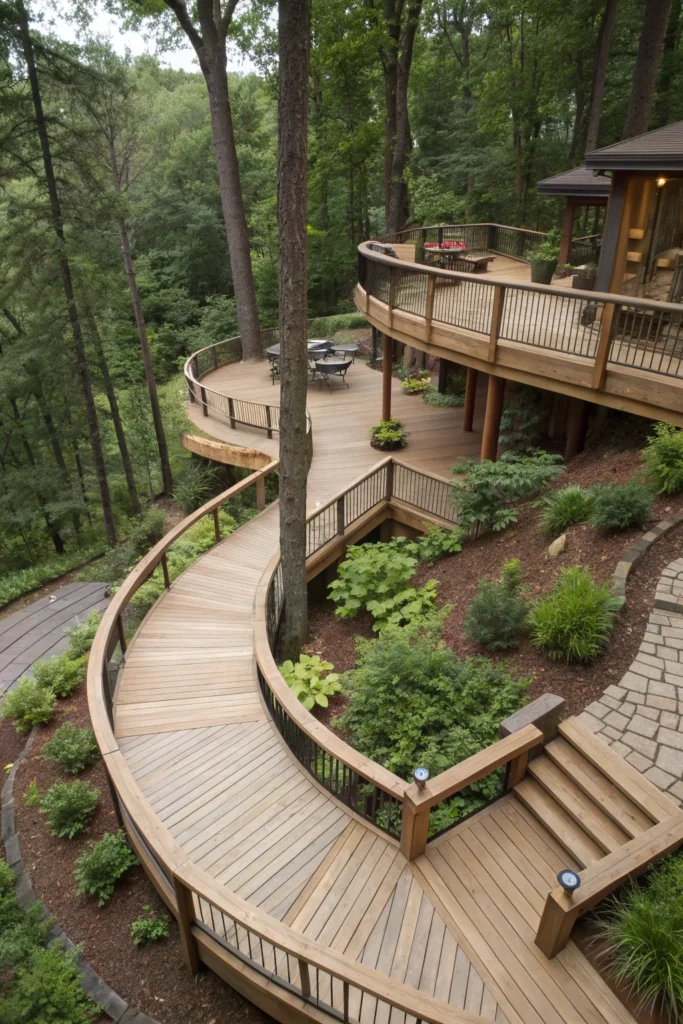
Design contemporary multi-level deck systems that weave through existing trees and forest plantings, creating elevated walkways and platform seating areas that let you experience your woodland garden from different perspectives and heights.
Use materials like composite decking or naturally-finished hardwoods that will weather beautifully over time. The deck system should follow natural contours and work around existing vegetation rather than requiring major tree removal. Include built-in planters and seating to make the structures feel integrated rather than imposed on the natural setting.
Creating a modern forest garden is all about finding that perfect balance between sophisticated design and natural beauty. These concepts prove you don’t have to choose between contemporary style and ecological richness – the most stunning outdoor spaces happen when modern design principles enhance rather than fight against nature’s incredible ability to create beauty and interest over time. Your backyard forest garden will become more magical with every season as plants mature and the ecosystem develops into something truly extraordinary.

